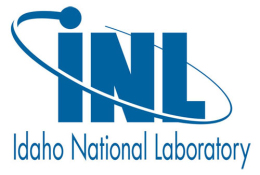
Idaho National Lab Adaptive Robotics Program
The Idaho National Laboratory (INL) Adaptive Robotics Program is working to create a new class of robotic systems that can adapt their level of autonomy, leveraging their own built-in intelligence in order to meet the level of control that is being commanded by its user.
The robots that this lab are developing come from a wide range of platforms, from ATV to submersible robots and even a swarm of interactive robots, some of which are smaller than a human hand. These robots share a common trait; the ability to share initiatively between human and robot, allowing the system to cope with interruptions in communication links, component breakdowns, and changes in operator workload, resources, and mission needs.
And considering that machine intelligence and adaptation starts with robust real world sensing, the lab concentrates on developing sensor-rich machines and fusion algorithms that lets the robots fully experience and understand their surroundings. With that in mind, scientists and engineers at INL try hard to improve the sensing and processing system that these robots utilize. They also aim to broaden robotic capacity.
At the INL and several Department of Energy sites, remote characterization of hazardous surroundings like high radiations areas, chemically contaminated areas and even unknown environments is a serious application area, where the need for this type of research is sensitive.
Among the robots that they have created specifically for this type of surrounding is a robot that is capable of detecting and measuring gamma ray radiation, thus prevents any human exposure. Another is a HEPA filtered vacuum cleaner robot, capable of cleaning up dangerous waste without exposing people to the harmful effects of such waste.
Currently, INL is taking steps toward practical objectives set down in the DOE Critical Technology Roadmap, including a personnel radiation exposure reduction of 90%, secondary waste reduction by 75% and productivity going up 200%.